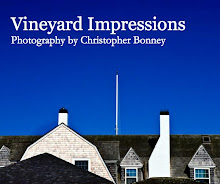Lights. Camera. Action! 2012
(Click on images to see larger)
I’ve never been in a movie. In 1971 I showed up to be an
extra for a commercial in which twenty-five seconds of men in Confederate
uniforms and ladies in frilly gowns straight out of Gone with the Wind milling around an elegant old hotel lobby gave
way to five seconds of a cold cuts arranged on silver platters. I didn’t get a
part because they’d run out of uniforms by the time I got there. (But twelve years
later I did end up working for the ad agency that made the commercial.)
Through the years I’ve stumbled onto location shoots for
television shows and movies. My daughter and I were once walking down a street
in Little Italy in New York where Woody Allen was filming “Melinda and
Melinda.” Regular readers of this blog will recall that I practically brushed against
a scantily dressed Blake Lively in Venice Beach, California, during a shoot for
the television show Gossip Girls. (I
had to be told who she was.)
Last summer I stumbled onto a location shoot for what I
assume was a commercial. It was in the Soho area of Manhattan. There were lots
of everyday looking people sitting in director’s chairs lined up along a
sidewalk. There was the requisite craft services table full of food. A big garbage
truck was parked in the middle of an intersection. There were cameras at street
level and another one on a large boom looking down on the intersection.
Extras, 2012
I assumed this was a commercial because there were no
recognizable celebrities among the “talent,” as they’re call in the ad biz.
There were none of the regulars you see on Law
& Order, for example. (I would not have to have been prompted, by the way, if I’d seen the lovely
Mariska Hargitay.)
It turns out most of the people I saw that day were extras,
bit players dressed as regular people on the street, earning the daily minimum
and keeping their union cards active. You could tell they were extras because when
they weren’t shooting they spent most of the time sitting in the aforementioned
director’s chairs, scarfing down free food from the craft services table,
playing cards and checking their messages. The “star” was a strikingly beautiful
woman with legs longer than I’m tall and looks that make her perfect for
commercials that will be viewed in many countries and different cultures.
Along with a bunch of other bystanders, mostly Europeans—including
a German guy who wanted to know if one of the featured models was Jennifer
Aniston—I watched four takes of the scene. Here’s the gist of it: A beautiful
woman in an elegant dress and high heels is being chased down a busy city sidewalk
by three burly thugs. She has to thread herself through a crowd of the extras. Just
when the thugs are about to grab her, she hops from the curb up onto the back
of a passing garbage truck and rides away.
It’s anyone’s guess what they were advertising. A perfume
called “Escape” or “Freedom,” maybe? Pantyhose that hold their shape while you
jump to a garbage truck? There was no dialog. Your guess is as good as mine.
Viewers, 2012



























